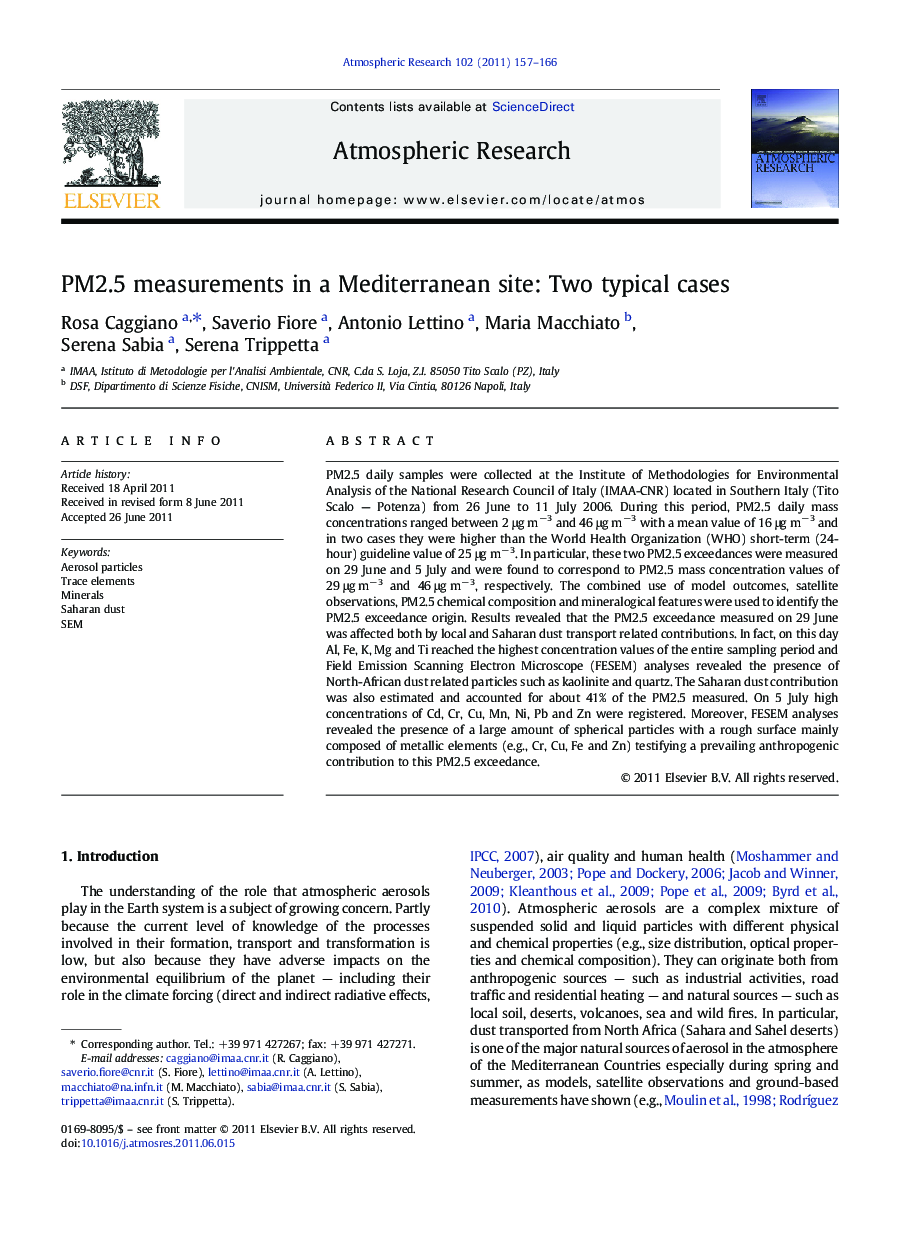| کد مقاله | کد نشریه | سال انتشار | مقاله انگلیسی | نسخه تمام متن |
|---|---|---|---|---|
| 4450479 | 1620560 | 2011 | 10 صفحه PDF | دانلود رایگان |

PM2.5 daily samples were collected at the Institute of Methodologies for Environmental Analysis of the National Research Council of Italy (IMAA-CNR) located in Southern Italy (Tito Scalo — Potenza) from 26 June to 11 July 2006. During this period, PM2.5 daily mass concentrations ranged between 2 μg m−3 and 46 μg m−3 with a mean value of 16 μg m−3 and in two cases they were higher than the World Health Organization (WHO) short-term (24-hour) guideline value of 25 μg m−3. In particular, these two PM2.5 exceedances were measured on 29 June and 5 July and were found to correspond to PM2.5 mass concentration values of 29 μg m−3 and 46 μg m−3, respectively. The combined use of model outcomes, satellite observations, PM2.5 chemical composition and mineralogical features were used to identify the PM2.5 exceedance origin. Results revealed that the PM2.5 exceedance measured on 29 June was affected both by local and Saharan dust transport related contributions. In fact, on this day Al, Fe, K, Mg and Ti reached the highest concentration values of the entire sampling period and Field Emission Scanning Electron Microscope (FESEM) analyses revealed the presence of North-African dust related particles such as kaolinite and quartz. The Saharan dust contribution was also estimated and accounted for about 41% of the PM2.5 measured. On 5 July high concentrations of Cd, Cr, Cu, Mn, Ni, Pb and Zn were registered. Moreover, FESEM analyses revealed the presence of a large amount of spherical particles with a rough surface mainly composed of metallic elements (e.g., Cr, Cu, Fe and Zn) testifying a prevailing anthropogenic contribution to this PM2.5 exceedance.
► PM2.5 measurements were analyzed.
► The PM2.5 exceedance origin of the 24-hour WHO guideline value was investigated.
► In situ measurements, model outcomes and satellite observations were combined.
► The Saharan dust contribution to a PM2.5 exceedance was quantified.
► The PM2.5 particle origin was identified by means of FESEM analyses.
Journal: Atmospheric Research - Volume 102, Issues 1–2, October 2011, Pages 157–166